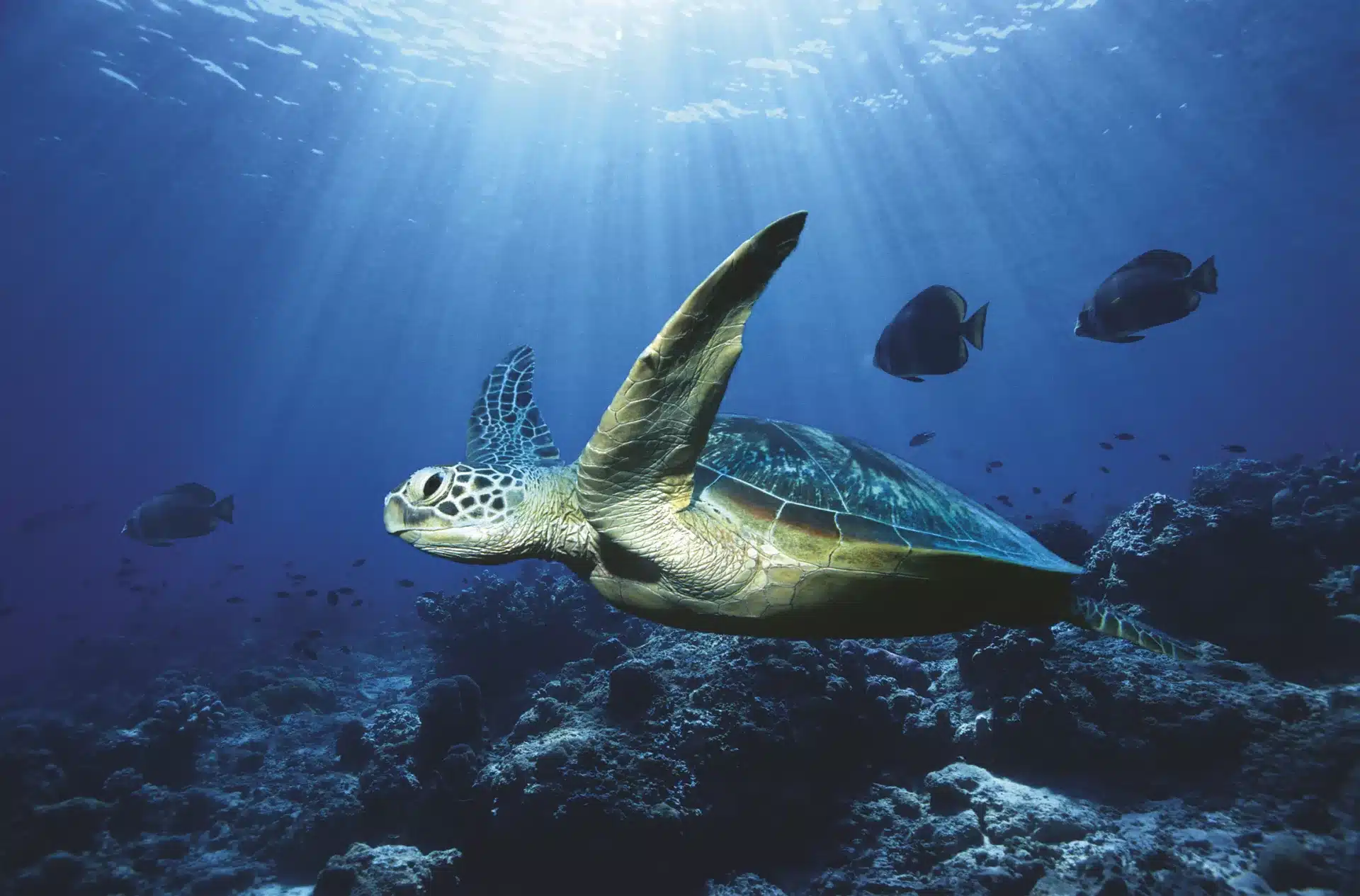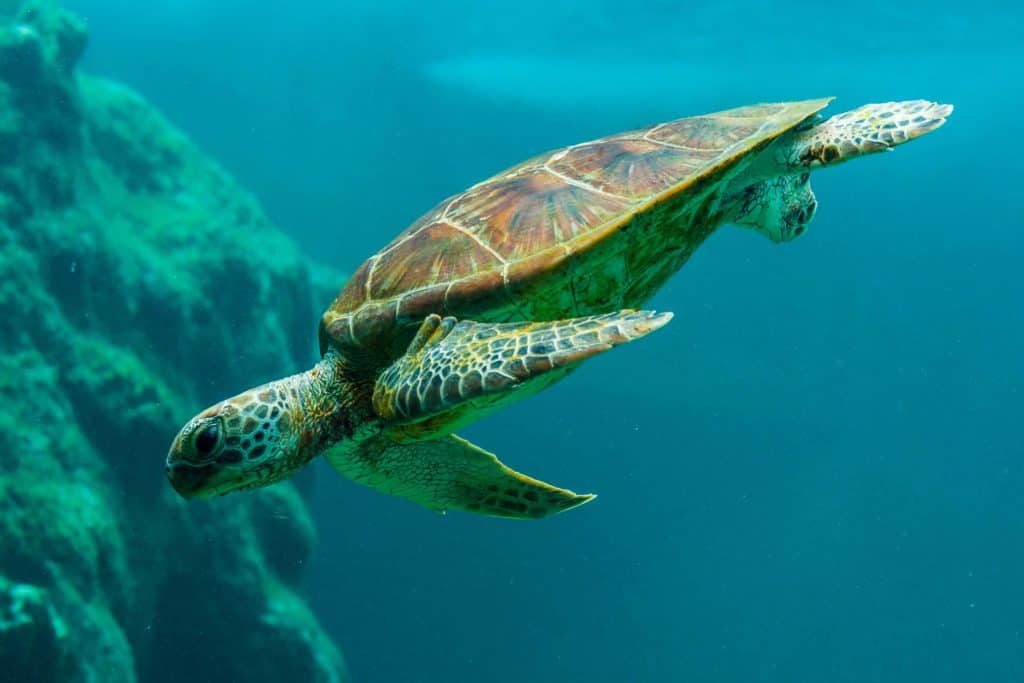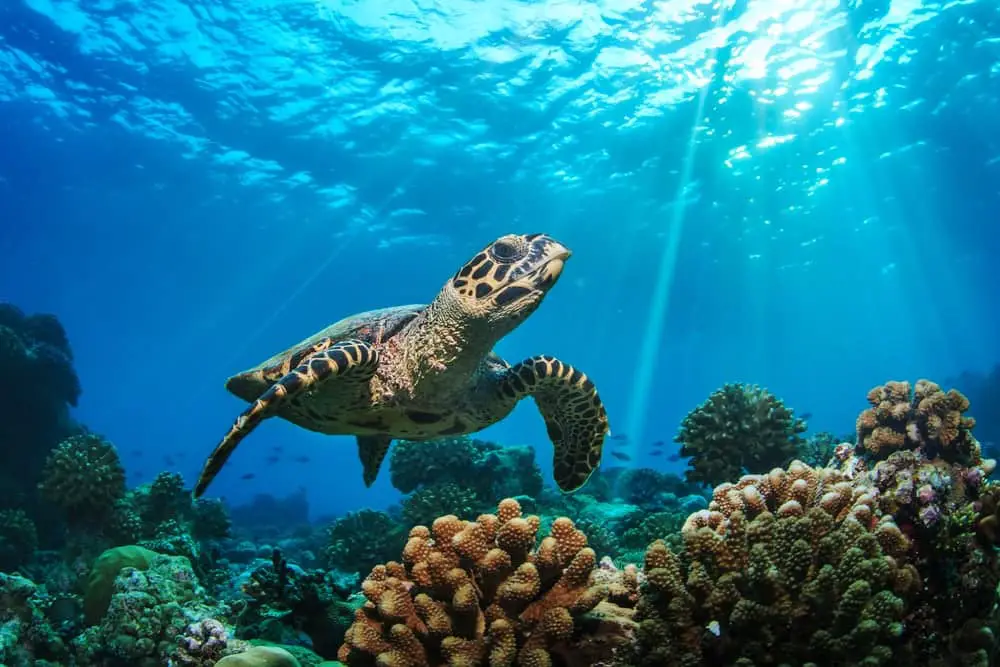Do Sea Turtles Have Gills

Introduction
Do Sea Turtles Have Gills: Sea turtles are among the most fascinating and enigmatic creatures that inhabit the world’s oceans. Their graceful movements and ancient lineage have captured the imaginations of people worldwide.
While most people associate gills with aquatic animals like fish, sea turtles are a unique group of reptiles that have adapted to marine life. Unlike fish, they are air-breathing creatures, and they must come to the surface to breathe. However, the question of gills arises because sea turtles can spend long periods submerged, even sleeping underwater. This ability raises questions about the mechanisms they use to extract oxygen from the water and how they have evolved to survive in such an environment.
To uncover the truth about sea turtles and gills, we will delve into their biology and the intricacies of their respiratory systems. We will explore their anatomy, behavior, and the remarkable adaptations that allow them to navigate the oceans for decades. By understanding whether sea turtles have gills or not, we can gain valuable insights into the evolution and survival strategies of these ancient and majestic creatures in our planet’s vast and mysterious seas.

Do sea turtles have lungs or gills?
Just like other reptiles, sea turtles have lungs. They have a slightly different structure than mammalian lungs, but work just as well when it comes to exchanging gases (oxygen and carbondioxide). The lungs are located right under the carapace and the vertebral column.
Sea turtles, unlike fish, do not have gills. Instead, they rely on lungs for respiration. They are obligate air-breathers, which means they must come to the water’s surface to breathe. When a sea turtle surfaces, it extends its head above water and takes a quick gulp of air. These breaths are crucial for replenishing their oxygen supply, allowing them to endure extended periods underwater.
The structure of a sea turtle’s lungs differs significantly from those of mammals. Their lungs are more like elongated sacs, extending throughout the entire body cavity. This unique design helps minimize buoyancy, allowing sea turtles to remain relatively stable underwater. It also allows them to extract oxygen more efficiently from the air they breathe, facilitating their prolonged dives.
While sea turtles lack gills, their respiratory adaptations are a marvel of nature, enabling them to explore the depths of the oceans while still needing to return to the surface periodically for oxygen. This balance between terrestrial and aquatic respiration is just one of the many fascinating aspects of sea turtle biology that contribute to their survival in the marine environment.
How long can sea turtles hold their breath?
How long can sea turtles stay underwater? When they are active, sea turtles must swim to the ocean surface to breathe every few minutes. When they are resting, they can remain underwater for as long as 2 hours without breathing.
Sea turtles are remarkable divers, and their ability to hold their breath is truly impressive. While the exact duration a sea turtle can hold its breath varies among species and individual turtles, they are known to remain submerged for extended periods.
Typically, sea turtles can hold their breath for anywhere from 30 minutes to several hours. Leatherback sea turtles, the largest of all sea turtle species, are known to have exceptional breath-holding capabilities and can stay submerged for up to 85 minutes. This impressive feat is attributed to their large size and unique adaptations.
Several factors contribute to a sea turtle’s extended breath-holding ability. First, their slow metabolic rate while submerged helps conserve oxygen. Additionally, their lungs are designed for efficient gas exchange, allowing them to extract oxygen from each breath effectively.
Despite their remarkable underwater prowess, sea turtles eventually need to return to the surface to breathe. The frequency of these trips varies depending on their activity, such as feeding or resting. These adaptations have allowed sea turtles to thrive in their oceanic habitats for millions of years, showcasing their incredible ability to adapt to life beneath the waves.
Do turtles ever have gills?
As mentioned earlier, they can hold their breath for long periods of time, depending on how active they are. Turtles are reptiles that do not have gills like fish do. They cannot process water into oxygen for their bodies. Thus, they implement other methods, such as holding their breath or cloacal breathing.
Turtles, both aquatic and terrestrial species, do not have gills at any stage of their life cycle. Unlike some aquatic animals like fish or amphibians, turtles belong to the reptilian class and breathe air using lungs throughout their entire lives.
During their embryonic development, turtles do possess a structure called a “chorioallantoic membrane,” which functions in gas exchange within the egg. While this membrane is somewhat similar to gills in its oxygen exchange function, it is not a set of gills. Instead, it serves as a temporary adaptation for gas exchange within the confines of the egg, allowing the developing turtle embryo to obtain oxygen from the environment while still inside the egg.
Once a turtle hatches from its egg and enters the outside world, it becomes an air-breathing reptile. Its respiratory system matures, and it starts using lungs to extract oxygen from the atmosphere, just like adult turtles.
Turtles never have gills, even during their early stages of development. Their evolutionary lineage as reptiles has equipped them with lungs as their primary respiratory organs, enabling them to live both on land and in water while relying on air for respiration throughout their entire lives.
Can sea turtle breathe air?
Sea turtles spend most of their lives submerged in an aquatic environment, but they also can spend significant amounts of time at the surface of the water because they require air to breathe. In addition, new hatchlings and nesting females spend time, however brief, on the beach.
Sea turtles can indeed breathe air. Unlike fish and other aquatic animals with gills, sea turtles are reptiles, and they are obligate air-breathers. This means that they rely on lungs to extract oxygen from the air.
Sea turtles have adapted to a life that involves spending a significant amount of time in the water, but they must come to the surface to breathe regularly. When they surface, they extend their heads above the water’s surface and take a quick gulp of air. This action allows them to replenish their oxygen supply, which they then store in specialized tissues and blood to support them during their dives.
The frequency of a sea turtle’s need to breathe varies depending on its activity. For instance, when actively swimming or foraging, they may come to the surface more frequently. In contrast, when resting or sleeping, they can hold their breath for longer periods. These adaptations allow them to effectively balance their underwater and surface activities, making them well-suited to their marine environments.
What are 3 interesting facts about sea turtles?
10 Tremendous Turtle Facts
- Green sea turtles are what they eat!
- Sea turtles lay their eggs in a nest they dig in the sand with their rear flippers.
- Sand temperature is very important.
- Hawksbill turtles use their beaks to help extract their favorite prey.
- One sea turtle species nests during the day.
Sea turtles are fascinating creatures that have captured the hearts of many with their unique characteristics and behaviors. Here are three interesting facts about these remarkable marine reptiles:
Ancient Travelers: Sea turtles are among the oldest creatures on Earth, with a lineage dating back over 100 million years. Their ancestors shared the planet with dinosaurs, making them living relics from a distant past. These ancient travelers have adapted to various ocean environments and continue to play crucial roles in marine ecosystems.
Remarkable Navigators: Sea turtles possess an extraordinary ability to navigate across vast ocean expanses. They rely on Earth’s magnetic field and cues from the sun and stars to pinpoint their precise nesting and feeding grounds. This remarkable navigational prowess allows them to undertake epic migrations, sometimes spanning thousands of miles, to return to the very beaches where they were born to lay their eggs.
Vulnerable Species: Despite their resilience and longevity, sea turtles face numerous threats in the modern world. Habitat destruction, pollution, and entanglement in fishing gear are major challenges. Additionally, climate change poses a significant threat by altering nesting beach temperatures and influencing the sex ratios of hatchlings. Conservation efforts are crucial to protect these ancient mariners and ensure their survival for future generations.
How do sea turtles breathe if they don’t have gills?
Sea turtles, despite their aquatic lifestyle, do not have gills like fish to extract oxygen from water. Instead, they rely on a remarkable adaptation known as buccal respiration, a process that allows them to breathe air while submerged. Sea turtles possess lungs, just like mammals, and must come to the water’s surface to take in oxygen. When a sea turtle needs to breathe, it swims to the surface, pokes its head above the water, and opens its mouth wide to gulp air.
The turtles then store this precious oxygen in specialized sacs near their lungs, called cloacal bursae, which function like small pockets. These sacs help sea turtles maintain oxygen levels while they’re underwater, where they can stay for extended periods. This adaptation enables sea turtles to explore vast oceanic realms, diving to significant depths and enduring lengthy journeys.
The ability to breathe air allows sea turtles to thrive in both aquatic and terrestrial environments, as they also come ashore to lay their eggs. While they may not have gills, their unique respiratory system exemplifies nature’s ingenious solutions for survival in the watery world they call home.
Can sea turtles extract oxygen from water at all?
Sea turtles, unlike fish and some other marine creatures, cannot extract oxygen directly from water. They lack gills, which are specialized respiratory organs found in fish, that enable aquatic organisms to extract dissolved oxygen from the water around them. Instead, sea turtles are air-breathing reptiles, and they rely on lungs to respire.
When sea turtles need to breathe, they come to the water’s surface, lift their heads above the surface, and take in gulps of air. This process is similar to the way humans breathe, although sea turtles have adapted to hold their breath for extended periods during deep dives. To facilitate this, they have specialized adaptations such as cloacal bursae, which are small sacs near their lungs that store oxygen, helping them endure longer underwater excursions.
Sea turtles are well-suited to their aquatic lifestyle, but they are fundamentally reliant on atmospheric oxygen for survival. This reliance on air limits the depth and duration of their underwater activities, but they have evolved to make the most of their time beneath the waves by efficiently managing their oxygen supply.
Why is it important to protect sea turtles if they breathe air like humans?
Protecting sea turtles is crucial despite their ability to breathe air like humans because these ancient marine creatures play unique and vital roles in maintaining the health of our oceans and coastal ecosystems.
- Biodiversity: Sea turtles are a part of the rich biodiversity of marine life. They are not only majestic creatures but also integral components of complex food chains. Their presence or absence can significantly impact the balance of marine ecosystems.
- Beach Ecosystems: Sea turtles are essential for the health of beach ecosystems. When they nest on beaches, they dig nests that help aerate the sand, promoting plant growth and preventing erosion. The hatched eggs also provide nutrients to the dunes.
- Balancing Population: Sea turtles help control the populations of various marine species. They feed on jellyfish, for instance, which, if unchecked, can disrupt the balance of marine life by overpopulating and preying on fish eggs.
- Tourism and Economy: Many coastal communities rely on sea turtle-related tourism, which generates income and jobs. Protecting sea turtles contributes to the sustainability of these economies.
- Indicator of Ocean Health: The well-being of sea turtle populations reflects the overall health of the oceans. Efforts to protect them, including reducing plastic pollution and preserving nesting habitats, have broader positive impacts on marine ecosystems.

Conclusion
In our quest to answer the intriguing question, “Do sea turtles have gills?” we have unveiled the remarkable adaptations that enable these oceanic reptiles to thrive in their aquatic habitats. While sea turtles do not possess gills like fish, their respiration strategy is a blend of aquatic and terrestrial adaptations.
Sea turtles are air-breathing animals, relying on lungs to extract oxygen from the atmosphere. Unlike fish, they must regularly surface to breathe, which makes them vulnerable to various threats, including human activities like fishing and pollution. Nonetheless, they have developed astounding abilities to remain submerged for extended periods, sometimes even hours or days.
To extend their dive durations, sea turtles have evolved features such as an efficient oxygen storage mechanism and a slowed metabolic rate when submerged. They employ a remarkable balance between conserving energy and obtaining oxygen to navigate the vast expanses of the ocean.
Sea turtles do not possess gills in the traditional sense, but their unique respiratory adaptations have allowed them to conquer the challenges of underwater life for millions of years. Understanding these adaptations is crucial for conservation efforts, as these ancient creatures face numerous threats in today’s changing world. By protecting their habitats and reducing human impact, we can ensure the continued existence of these majestic animals and the preservation of our planet’s marine ecosystems.



